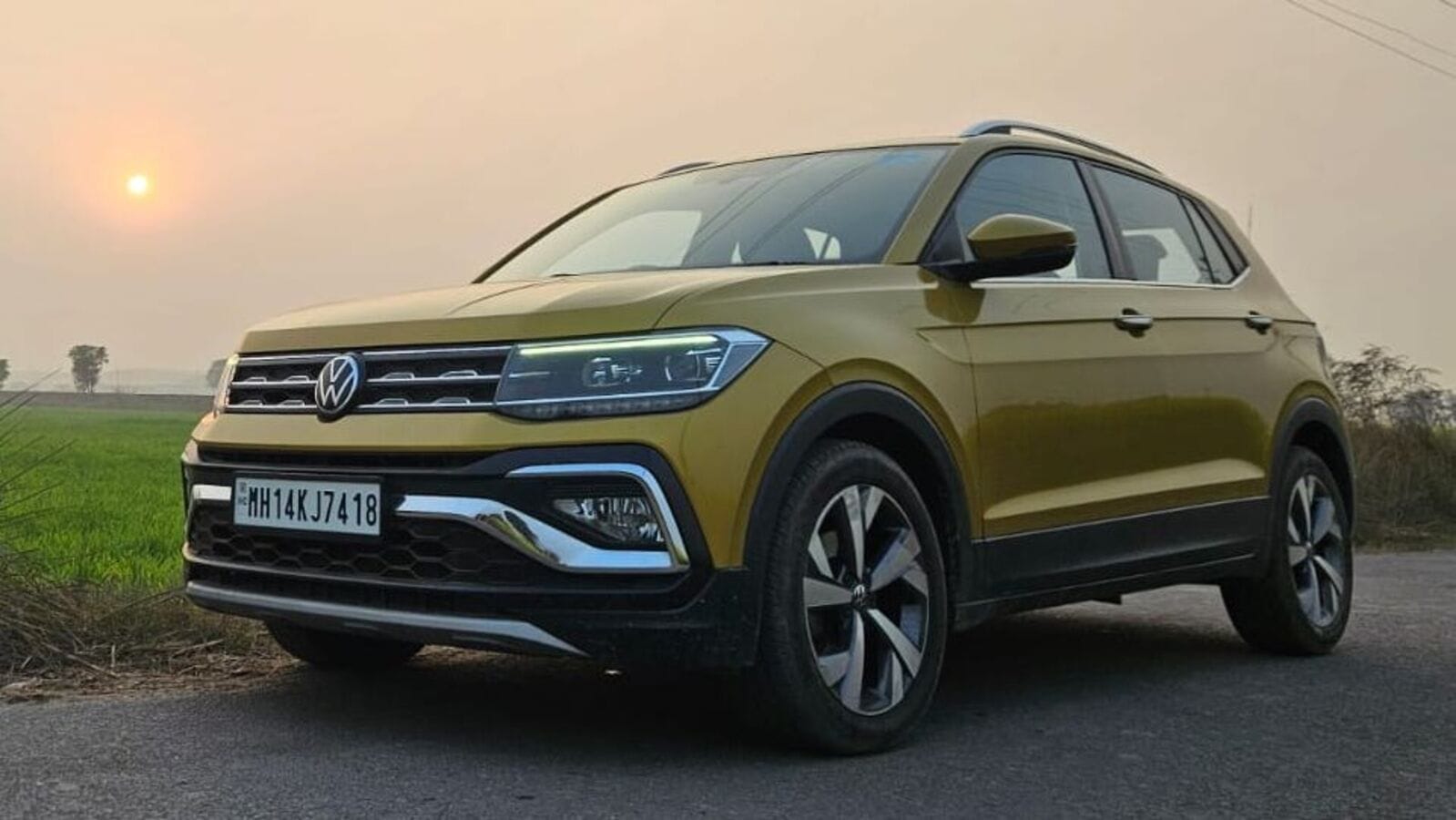Volkswagen offers the Taigun with a 1.0-litre and a 1.5-litre turbocharged petrol engines. Here is the fuel efficiency figure of the 1.0-litre TSI wit
…
Volkswagen offers the Taigun with a 1.0-litre and a 1.5-litre turbocharged petrol engines. Here is the fuel efficiency figure of the 1.0-litre TSI with the 6-speed automatic transmission.
Volkswagen’s India 2.0 strategy has been doing quite well in the Indian market. The Virtus and the Taigun have been selling in decent numbers despite the competition that is there in the segment. Volkswagen launched the Taigun back in 2021 and since then it has received some feature additions as well as some special editions. Yes, there were a few issues when the vehicle was first launched but Volkswagen was able to fix them just in time.
The mid-size SUV is offered with a 1.0-litre TSI and a 1.5-litre EVO petrol engine. While the 1.5-litre EVO is the one that is more powerful and is desirable among enthusiasts, it is the 1.0-litre TSI that is more affordable and is being preferred by most people.
The 1.0-litre TSI petrol engine produces 113 bhp of max power and 175 Nm of peak torque. It comes mated to a 6-speed torque converter and a 6-speed manual gearbox. Because both engines are turbocharged, there is a bit of misconception that they would not deliver a good fuel efficiency figure.
To test this out, we decided to take the Taigun 1.0 TSI with the automatic transmission for a fuel efficiency test. While stuck in bumper-to-bumper traffic, the fuel efficiency hovered around 8-9 kmpl but it does climb up to 13.5 kmpl with a light foot in city conditions. On the highways, we managed to squeeze out a fuel efficiency figure between 16.5 to 17.9 kmpl. Having said that, the vehicle that we tested was not equipped with idle start/stop functionality which could help in improving the fuel efficiency further.

It is important to note that turbocharged engines are very sensitive to throttle inputs. To counter the turbo lag, the gearbox would often downshift which might reduce the fuel efficiency figure. Fortunately, there are paddle shifters behind the steering wheel and one can up-shift if he or she is trying to maximise the fuel efficiency.
Also Read : Volkswagen Virtus, Taigun & Tiguan to get more expensive from January 1, 2024
What’s next? Well, now that we do know what the 1.0-litre TSI’s fuel efficiency figure is, we will be testing the 1.5-litre EVO engine to see what is the difference between the fuel efficiency figures of both engines. Moreover, it is important to note that the 1.5 EVO comes with ACT or Active Cylinder Deactivation which could help in improving the fuel efficiency further.
First Published Date: 30 Dec 2023, 13:16 PM IST
Source link

